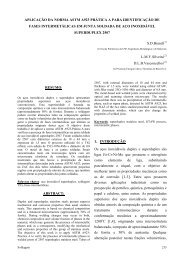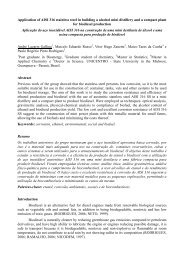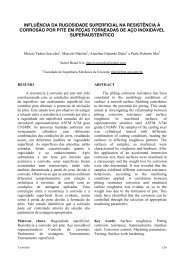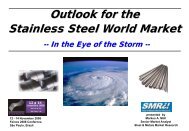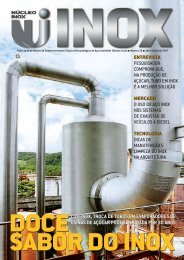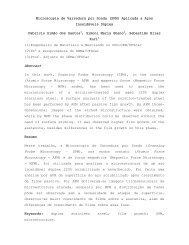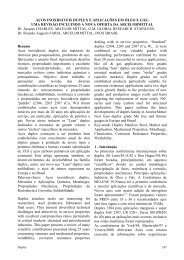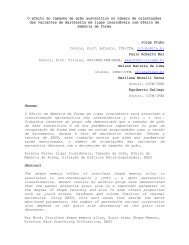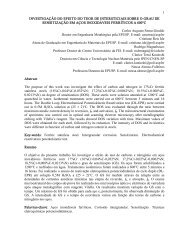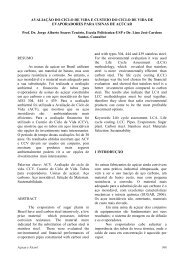Untitled
Untitled
Untitled
You also want an ePaper? Increase the reach of your titles
YUMPU automatically turns print PDFs into web optimized ePapers that Google loves.
- -<br />
g e n e r a l i n t r o<br />
The four types of stainless steel<br />
Austenitic<br />
Austenitic stainless steels contain a significant amount of chromium, and sufficient nickel or<br />
manganese to 'stabilise' the 'austenite' microstructure that gives these steels good formability and<br />
ductility (and makes them non-magnetic). A typical composition is 18% chromium and 8% nickel,<br />
as found in the popular ' 0 ' grade – to use the American Iron and Steel Institute (AISI) designation.<br />
Austenitic grades can be highly durable and corrosion resistant and have high ductility, low yield<br />
stress, relatively high tensile strength and good weldability. They have a very wide range of uses.<br />
Ferritic<br />
Ferritic stainless steels have properties similar to those of mild steel but show better corrosion<br />
resistance. Most common are 11% and 16% chromium-containing grades – the former used mostly<br />
in vehicle exhaust systems and the latter mostly in cooking utensils, washing machines and indoor<br />
architecture.<br />
Austenitic-Ferritic (Duplex)<br />
These stainless steels, which contain high chromium and some nickel, have a roughly 50% ferritic,<br />
50% austenitic microstructure. They are mostly used in the process industry and in seawater<br />
applications.<br />
MArtensitic<br />
Like ferritic grades, martensitic grades contain 1 % -16% chromium. However, they have higher<br />
carbon content and are subjected to specific heat treatments during production, making them very<br />
hard and strong. They are used in applications such as turbine blades, cutlery and razor blades.





